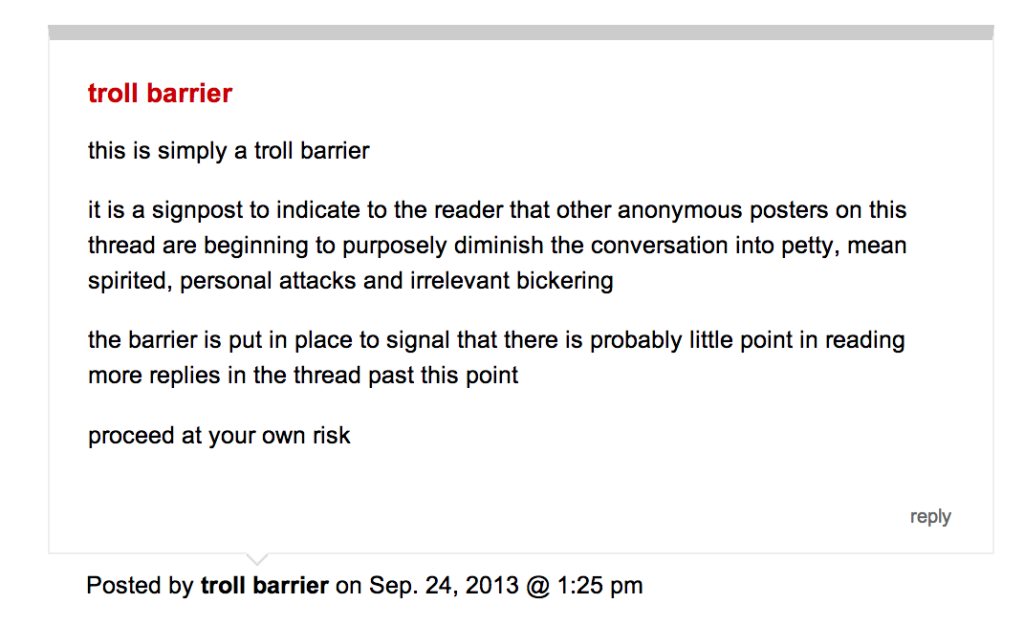Welcome to the the Weekly Illumination, a JTM newsletter offering a quick look at the week in journalism with a focus on what’s working in today’s news ecology. In this week’s Illumination we’ll look at how the role of the television in people’s homes is changing, explore how increased awareness of public surveillance is affecting journalism, and highlight two new sites created by established media companies.
Journalism that Matters announces call-out for submissions
Do you know of a news site or publication that’s doing something that others should follow? You could earn up to $250 by sharing their story on the Illuminations Blog. The Illuminations Project is built around highlighting these sorts of solutions, and we’ve announced a call-out for submissions showcasing as many of these success stories as possible.
Most Americans get their news from the TV, but many millennials avoid television
A new Pew study shows that even in 2013, more Americans get their news from television than online or print sources, but research from the New York Times shows that one-third of millennials watch little or no TV, reports Andrew Beaujon at Poynter. It’s not clear from these two studies whether young adults are consuming less news than their older counterparts, but it’s clear that a smaller portion of people will be getting their news from TV as the population shifts over time. Seeing this threat, John Malone, a leading executive in the cable industry, is calling for companies across the industry to develop a single national brand to stream content over the internet and compete against Netflix.
Project Censored’s 2014 compendium is available now
The latest edition of Project Censored’s annual volume of the most under-covered stories of the year is now available at your local bookstore and online. In this week’s Illumination’s blog we look at how the nonprofit organization has sustained itself for more than 35 years.
Get involved in the changing news and information ecosystem
JTM Board Member Peggy Holman’s series on the emerging information ecosystem continues with a look at the importance of diversity in voice, form and funding. In her latest column she explores the role you can play in improving our media landscape.
Dispatch from international gathering of news councils
JTM Alum John Hamer recently returned from the 15th annual meeting of Alliance of Independent Press Councils of Europe. Hamer is the president of the Washington News Council, the only group of it’s kind in the US, and filed this report from the meeting.
There are no anonymous sources without anonymonity
“At the present time, the NSA has made private electronic communication essentially impossible,” said scholars and journalists from the MIT Center for Civic Media and Columbia Journalism School in a 15-page comment to the group President Obama convened following the NSA revelations. “What the NSA is doing is incompatible with the existing law and policy protecting the confidentiality of journalist-‐source communications. This is not merely an incompatibility in spirit, but a series of specific and serious discrepancies between the activities of the intelligence community and existing law, policy, and practice in the rest of the government. Further, the climate of secrecy around mass surveillance activities is itself actively harmful to journalism, as sources cannot know when they might be monitored, or how intercepted information might be used against them.”
The Committee to Protect Journalists released its own report this week detailing how the Obama administration has contributed to this climate by aggressively pursuing leaks and the changing relationship between the government and the press in the decade following 9/11.
Does the future of the Washington Post look like Pinterest?
Ezra Klein, the publisher of the Washington Post’s Wonkblog has unleashed a new portal to that looks surprisingly like Pinterest. Know More consists of a series of boxes dominated by images with headlines underneath. Clicking on a box expands the image, and in some cases reveals an animated gif, and an opportunity to “know more.” The Nieman Journalism Lab spoke with Klein about the new site.
***
The people behind the Pulitzer winning fact-checking site PolitiFact, which fact checks elected officials, have announced their new site PunditFact will apply the same methodology to verify the statements made by pundits and other media personalities.
JTM named as one of the 105 vital sources for journalists
Journalismdegree.org released a guide to “the new media landscape” that includes “105 vital sources,” and JTM made the list. For anyone interested in the changing news ecology, this list is sure to yield some gems you haven’t seen before.
Job(s) of the Week
Yes! is looking for an Executive Editor.
For the past 75 years, the Nieman Foundation has offered one-year fellowships. Applications are still available.
***
The Illumination is a curated collection of stories about journalism innovation, notable job opportunities, grants and updates about Journalism that Matters. It is distributed to e-mail subscribers, through the JTM Google Group, and posted to the Illuminations blog.


